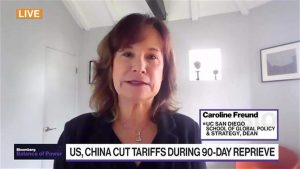
Financial advisors and clients seeking to boost the tax savings available through loss harvesting may consider an increasingly popular leveraging strategy known as the “long-short” method.
The combination of “long” investments on a stock’s positive outlook with “short” ones based on equity declines, plus margin loans that add debt leverage to the vehicle, may turn off some advisors with risk-averse clients who don’t have a lot of capital gains that need offsetting. But tax-aware long-short investing is drawing clients seeking to maximize returns through active management on a lengthy timeline with lower payments to Uncle Sam.
At their root, tax-aware long-short vehicles present “an opportunity to go overweight certain factors and go underweight certain factors and find alpha between the two,” said Brent Sullivan, a consultant on taxable investing product distribution to sub-advisory and ETF firms who writes the Tax Alpha Insider blog. The accompanying tax savings stem from loss harvesting that “oftentimes will exceed a dollar contributed” or could even reach 200% to 400% of the principal, he noted. Continual rebalancing pushes up the losses past the level available from many direct indexing strategies in a process Sullivan compares to a “perpetual ball machine.”
“The loss harvesting paradigm here is just totally different than a direct indexing long-only,” Sullivan said. “As the market goes up, you can continue shorting. Those shorts generate harvestable losses.”
READ MORE: How the ticking clock affects tax-loss harvesting
Much like his research documenting the continual rise in Section 351 conversions to ETFs, Sullivan is keeping close watch on tax-aware long-short vehicles, which have already surpassed his prediction of attracting $30 billion in assets under management by the end of the year. AQR Capital Management, a pioneer in tax-aware long-short strategies, is leading the way with $21.7 billion, but other managers such as Invesco, BlackRock and Quantinno have pushed the total above at least $35 billion, Sullivan noted in a newsletter last month.
“Today, advisers recognize that tax is a practice differentiator and a source of recurring client value,” Sullivan wrote. “They may be torn between low-cost, passive index ETFs and direct indexing, but that debate fades into the background once they learn of tax-aware long/short strategies.”
On the other hand, AQR itself is seeking to “help parse the jargon of this rapidly growing but sometimes confusing area” amid some “blurring of terminology, strategy design and investment objectives,” the asset management firm said in a blog post earlier this year. The company pushed back on the idea that the strategies are “only for billionaires” or simply trying to achieve benchmark returns, along with the notion that they are a form of “supercharged direct indexing.” While their tax benefits “are larger and last longer” than those of direct indexing, the two strategies come from “diametrically opposite starting points (active management for the former versus passive indexing for the latter),” the post said.


